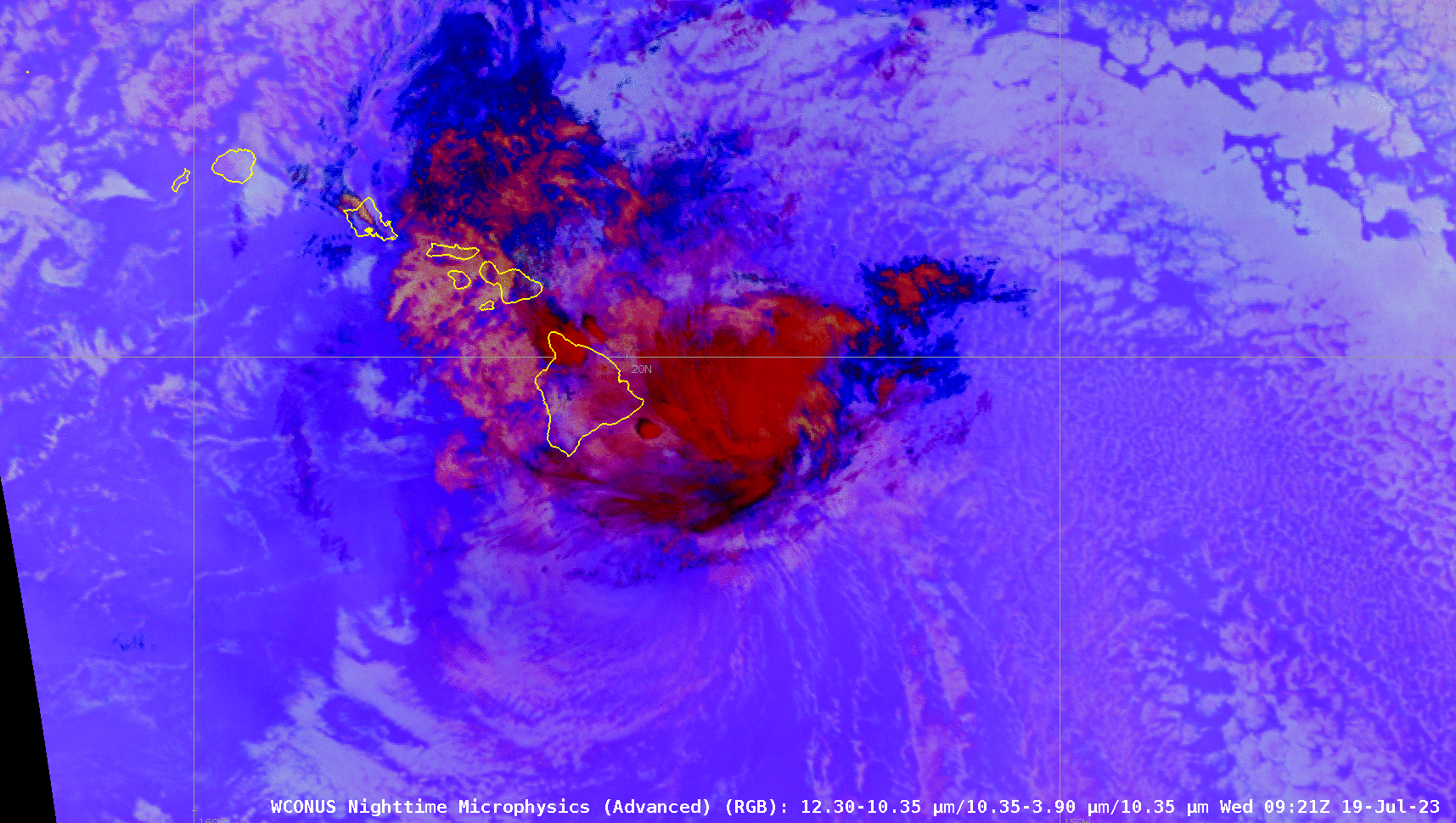
[ Archive ]

 |
CIMSS-NOAA Weekly Report [ Archive ] |
 |
CIMSS AND ASPB WEEKLY HIGHLIGHTS FOR THE WEEK ENDING JULY 21, 2023
DATA, INFORMATION, AND USE-INSPIRED SCIENCE:
FUTURE OUTLOOK:
AWARDS AND RECOGNITION:
TRAVEL AND MEETINGS:
TRAINING AND EDUCATION:
VISIT teletraining from CIMSS on 18 and 20 July: Scott Lindstrom from the Cooperative Institute for Meteorological Satellite Studies (CIMSS) gave Virtual Institute for Satellite Integration Training (VISIT) lessons to NWS Staff and students at the Sacramento Forecast office (NWS STO) on LightningCast Probabilities and at the Office of Observations (NWS OBS) on Forecaster Training for GOES-R Fog/Low Stratus fields. This training was done during the week of 17-21 July 2023. (S. Lindstrom, CIMSS, 608 263 4425)
MEDIA INTERACTIONS AND REQUESTS:
SOCIAL MEDIA AND BLOG Posts:
SSEC and CIMSS Scientists in the news: Scientists at the University of Wisconsin-Madison (UW) Space Science and Engineering Center (SSEC) and the Cooperative Institute for Meteorological Satellite Studies (CIMSS) provide expert interviews, imagery and case studies to promote science. This week: 1) CIMSS scientist Jason Otkin conducted an on-camera interview with News 3 Now about recent drought conditions across Wisconsin and the impacts recent precipitation have had on crops. Jason's segment begins at 16:30 at https://bit.ly/43GNJnP. 2) CIMSS Satellite Blog contributors Scott Lindstrom and Scott Bachmeier published these case studies: "Don meanders around the North Atlantic" (July 20), "Tropical Storm Calvin moves through the Hawai’ian Islands" (July 20), "Supercell thunderstorm produces giant hail and 100 mph winds in South Dakota" (July 18), "Morning view of Tropical Storm Calvin east of Hawai’i from Suomi-NPP’s Day Night Band" (July 18), "SAR Winds over American Samoa waters" (July 18) "Using data from NODD and Polar2Grid to create animations with JPSS data" (July 17), "Another explosive eruption of Mount Shishaldin" (July 16), "Canadian wildfire smoke across the North Central US" (July 15), "Eruption of Mount Shishaldin in the Aleutian Islands" (July 14), and "Hurricane Calvin in the Pacific Ocean" (July 14. Read more at the CIMSS Satellite Blog: https://cimss.ssec.wisc.edu/satellite-blog/. (S. Lindstrom, CIMSS, S. Bachmeier, CIMSS, E. Verbeten, SSEC)
 (Click image to enlarge)
(Click image to enlarge)
Figure: GOES-18 Night Microphysics RGB, 0921-1321 UTC on 19 July.
PUBLICATIONS:
Sea Ice Thickness Processes Article Published: An article titled "A climatology of thermodynamic vs. dynamic Arctic wintertime sea ice thickness effects during the CryoSat-2 era" was published in The Cryosphere. Sea ice parcels experience thickness changes primarily through two processes: due to freezing or melting (thermodynamics) or due to motion relative to other parcels (dynamics). These processes are independent and will be affected differently in a changing climate. In order to better understand these processes and compare them against models, observational estimates of each are necessary. The paper presents a large spatial- and temporal-scale observational estimate of both thermodynamic and dynamic processes' effects on sea ice thickness. Citation: Anheuser, J., Y. Liu, and J.R. Key, 2023, A climatology of thermodynamic vs. dynamic Arctic wintertime sea ice thickness effects during the CryoSat-2 era, The Cryosphere, 17, 2871–2889, https://doi.org/10.5194/tc-17-2871-2023. (J. Anheuser, CIMSS)
 (Click image to enlarge)
(Click image to enlarge)
Figure: Wintertime mean from late 2010 through early 2021 (except the winter of 2011–2012) of (a) overall sea ice thickness change, (b) thermodynamic sea ice thickness effects, and (c) dynamic sea ice thickness effects. Mean sea ice motion vectors from the same period are also plotted with dynamic effect, which follows spatial patterns suggested by the ice motion vectors.
OTHER:
| Archived Weeklies Page | Submit a report item |